Arashiyama Village is more than the Bamboo Grove and monkey forest which surround it. Taking a walk down the busy streets and quiet laneways of the small town is an excellent way to experience Japanese culinary treats, see traditional Japanese architecture and explore some lovely shops selling souvenirs and hand made crafts.
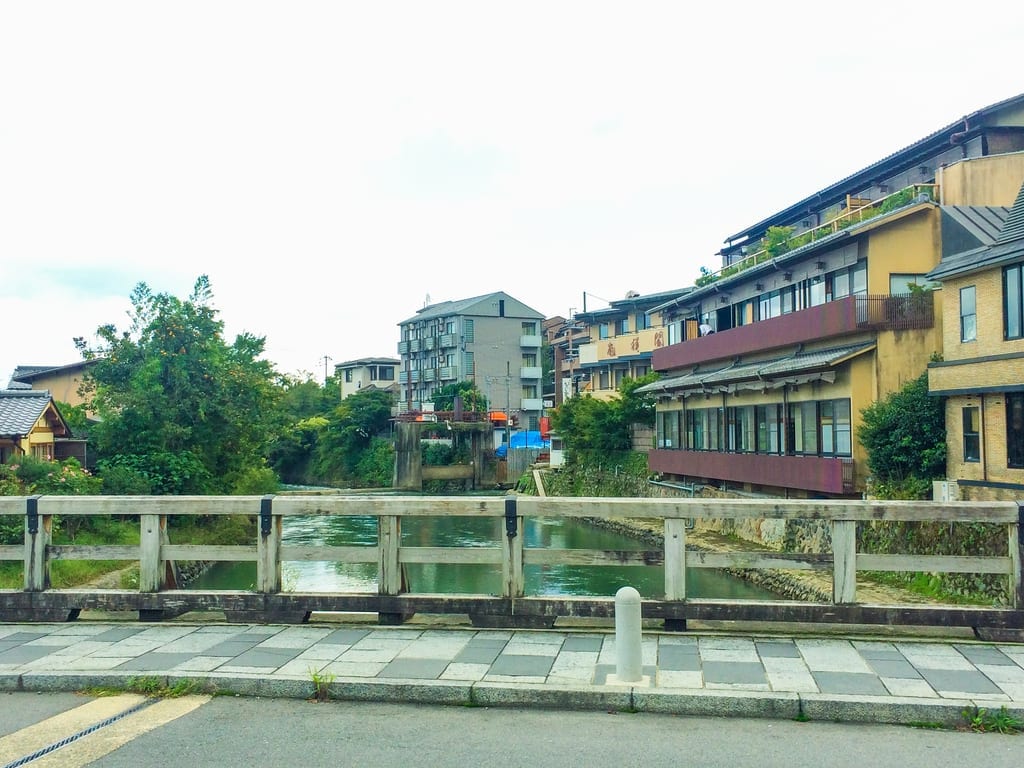
- Access
- Togetsukyo Bridge
- Hozu River Pleasure Boats
- Bicycle Rentals
- Kimono Rental
- Saga-Arashiyama
- Pick a Paper Fortune
- Sample Senbei
- Kotokikityaya
- Akahime Kimono Shop
- The Chiri-Men Craft Museum
- Sagano Romantic Train Station
- Kimono forest
- Footbath of Arashiyama Onsen Station
- Unagi Hirokawa
- Saga-Toriimoto
- Nisonin Temple
- Rakushisha Residence
- Tenryu-ji Temple
Access
The fastest way to access Arashiyama Village is by JR train from Kyoto station. That the JR Sagano Line to Saga-Arashiyama Station. The ride only takes 15 minues and costs 240 yen. If you don’t want to take the JR rail you can access Arashiyama by bus. Bus # 28 takes you directly from Kyoto station to the centre of Arashiyama. Although the ride can take anywhere between 30-60 mins I actually found the ride quite pleseant since you get to see a lot of the countryside and city as you travel from the centre of Kyoto to Arashiyama. This ride will only cost 230 yen.
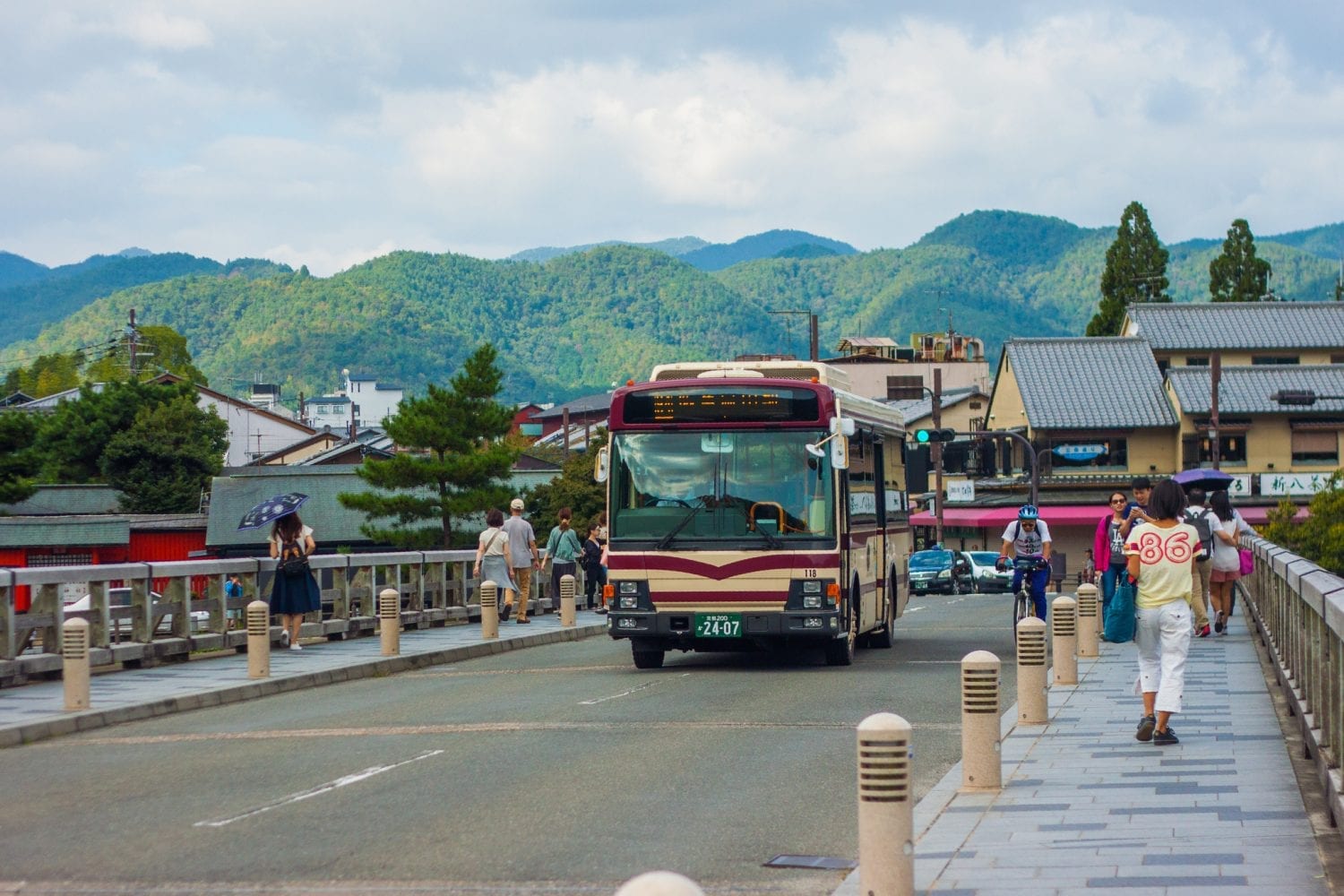
The streets of Arashiyama are ablaze with old and new technologies. Cars and tourist buses zip about letting people on and off while rickshaws and horse-drawn carriages also plod along the road, a reflection of the modes of transportation seen here during the Edo period. Arashiyama’s iconic river and laid back attitude have drawn visitors here for hundreds of years, and despite a few mod-cons, this little village still feels like stepping back in time.

Togetsukyo Bridge
Togetsukyo Bridge is Arashiyama’s most popular landmark and one of the first things you see when you come into the city. Also known as the “Moon Crossing Bridge,” it was first built in the 10th century, but its current incarnation is a reconstruction from the 1930s. Cherry blossom trees run up and down the river’s edge, and during the spring time, the blooms draw thousands of people to this site. With the mountains in the background and the river running across, this spot is incredibly picturesque.
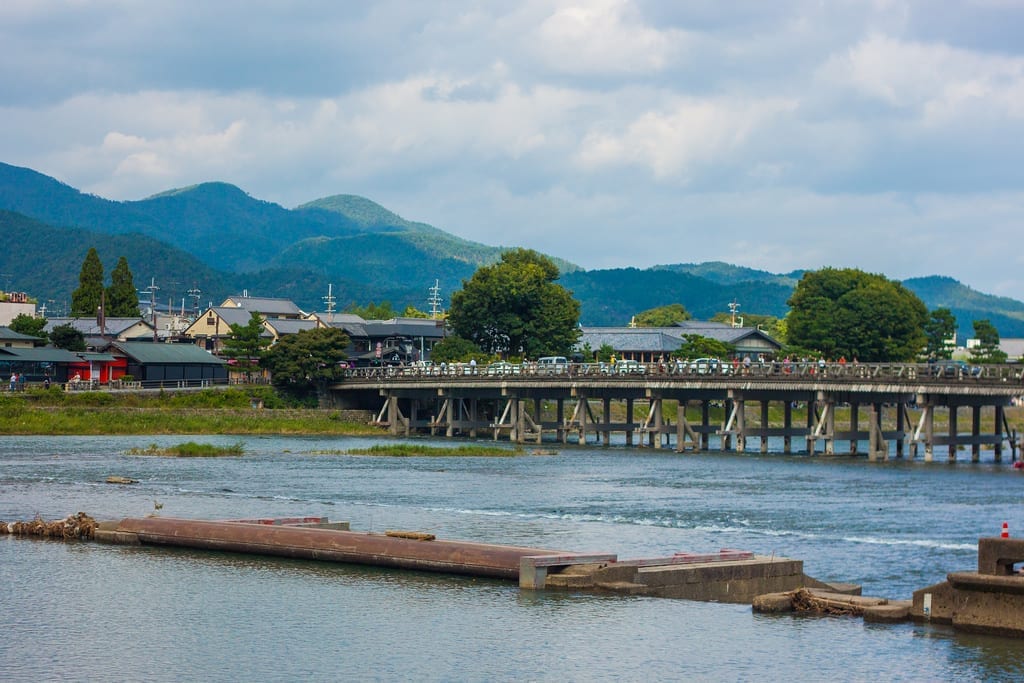
Hozu River Pleasure Boats
Beside the Hozu River, you can rent a “pleasure” boat. These boats will take you up and down, allowing you to see houses and landscapes only accessible from the water’s edge. The Hozu River is part of the Katsura River and begins in the mountains near Kameoka, a town north-west of Kyoto City. It snakes into the Arashiyama and surrounds the edges of the city. You’ll see, standing on the bridge, getting their photos taken, dozen of women dressed in stunning silk kimonos. Their hair and accessories match their outfit, and the dazzling embroidery on the kimonos sparkled in the sunlight. The boat trips usually last about two hours and can seat about 25 people. The boats depart on the hour from March 10 to November 30. The group boat costs 4,100 yen ($38 USD) for adults and 2,700 ($25 USD) yen for children.
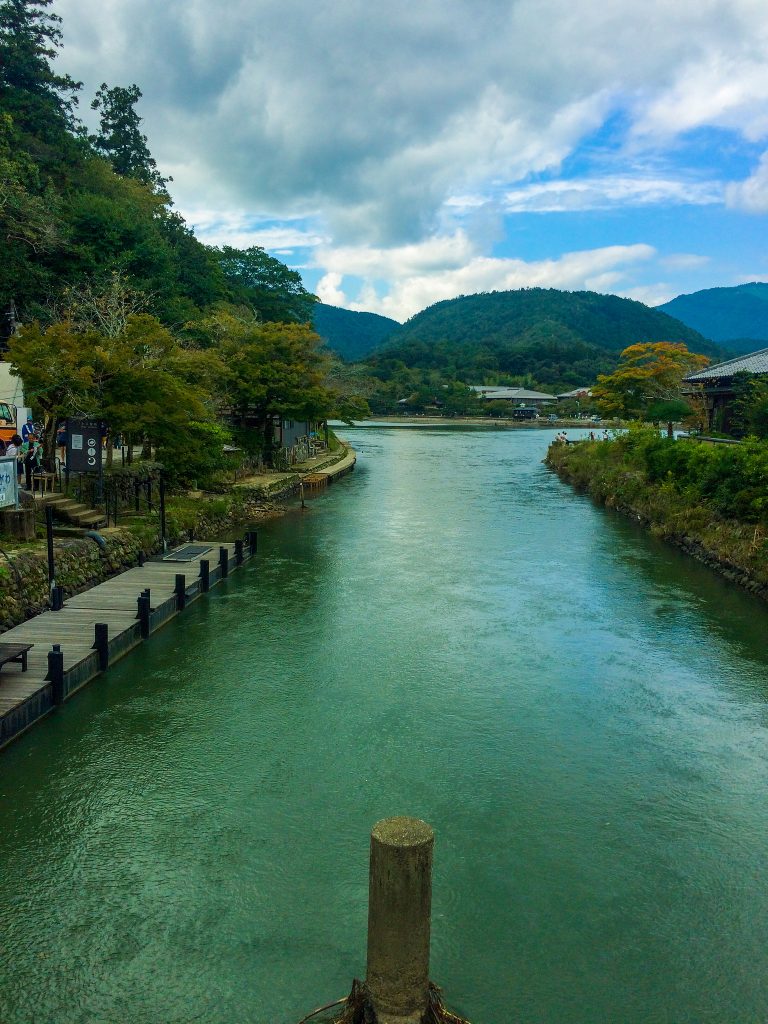
Bicycle Rentals
One of the best ways to explore Arashiyama is on bike. It’s such a peaceful, breezy village and cruising around on a bike gets you around quickly but also allows you to hop on and off to stop into stores and restaurants along the way. On these bikes you can cycle through rural areas, past farming fields and thatched roof houses. A wonderful way to explore the countryside. The best place to find bicycle rentals is at Hankyu Arashiyama Station. Bicycle rental at this shop costs 900 yen per day. On weekdays, they offer special prices of 500 yen for two hours and 700 yen for four hours. Renting at the station is great since it’s most likely where you’ll arrive and depart, making it easy to drop off your bike once you’re ready to head home.
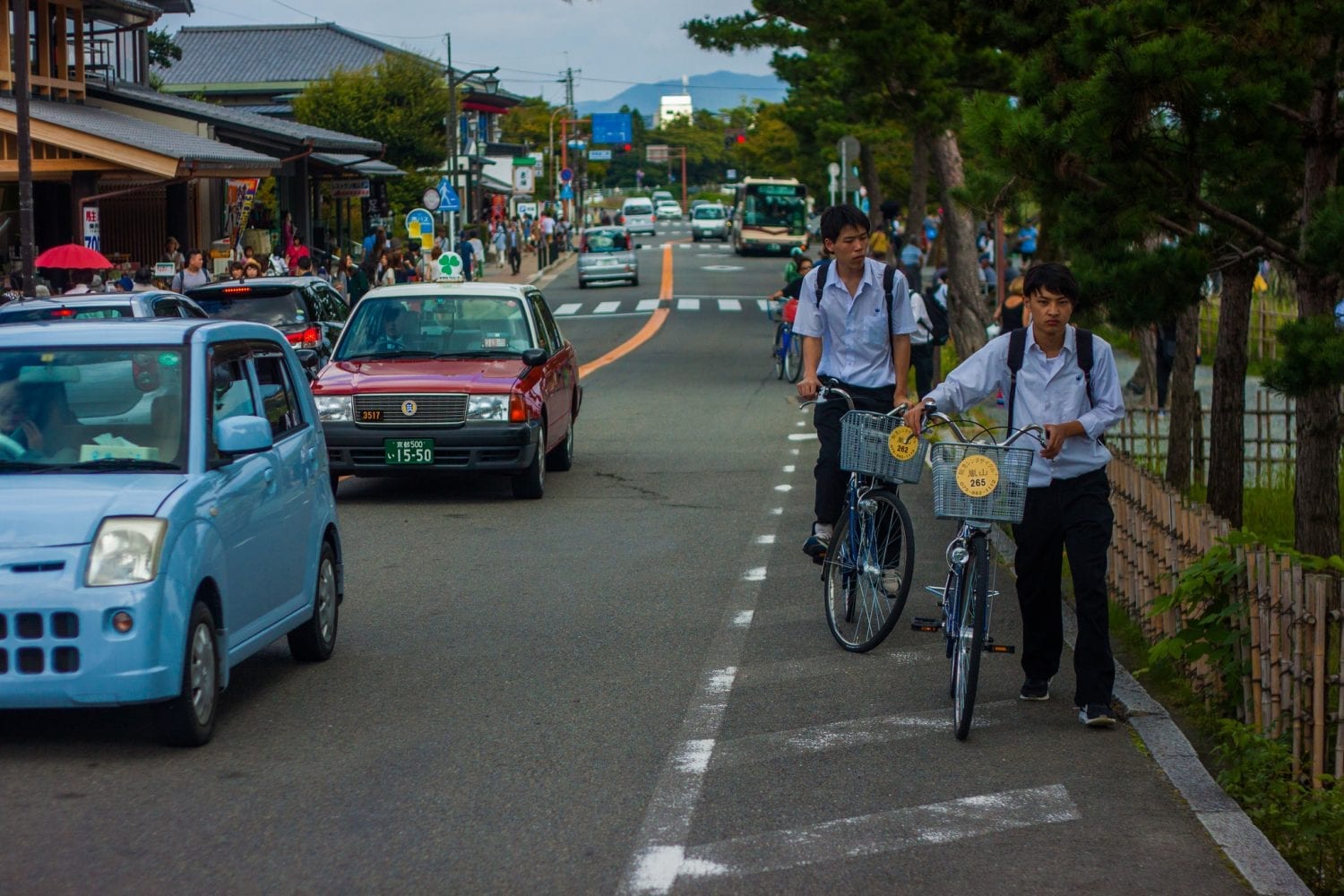
Kimono Rental
Kimonos are one of the most formal pieces of clothing many Japanese women own, and there are often not a lot of opportunities to wear them. But when travelling to these picturesque villages and historic towns, many women opts to wear their kimonos to both have a chance to dress in such an elegant fashion and feel a part of the historical look and feel of the city. The perfect place to rent a kimono if you’re looking to experience a bit of traditional Japanese culture is at Fuji Arashiyama. They might not be the cheapest, but the service and quality you’ll receive make it worth your while.
Renting a kimono is something which you want to get right. Doing it on the cheap just won’t create the same traditional experience you’re looking for. A one day rental for a 7 piece kimono set costs 3500 yen ($32 USD). You have total control of the colours and pattern of the kimono but the staff is great at helping coordinate your outfit and dress you up for a day out on the town.

Saga-Arashiyama
The primary place to do your shopping is on Saga-Arashiyama. This street in Arashiyama is constantly crowded with school children on break with their class, large tour groups and Westerners gawking at sweet shops creating art from spun sugar. Rickshaws run up and down the roads, getting honked at by locals trying to get back home in a hurry. The shops lining the street range from restaurants, cafes, sweet shops, ice cream vendors, kimonos designers and more.
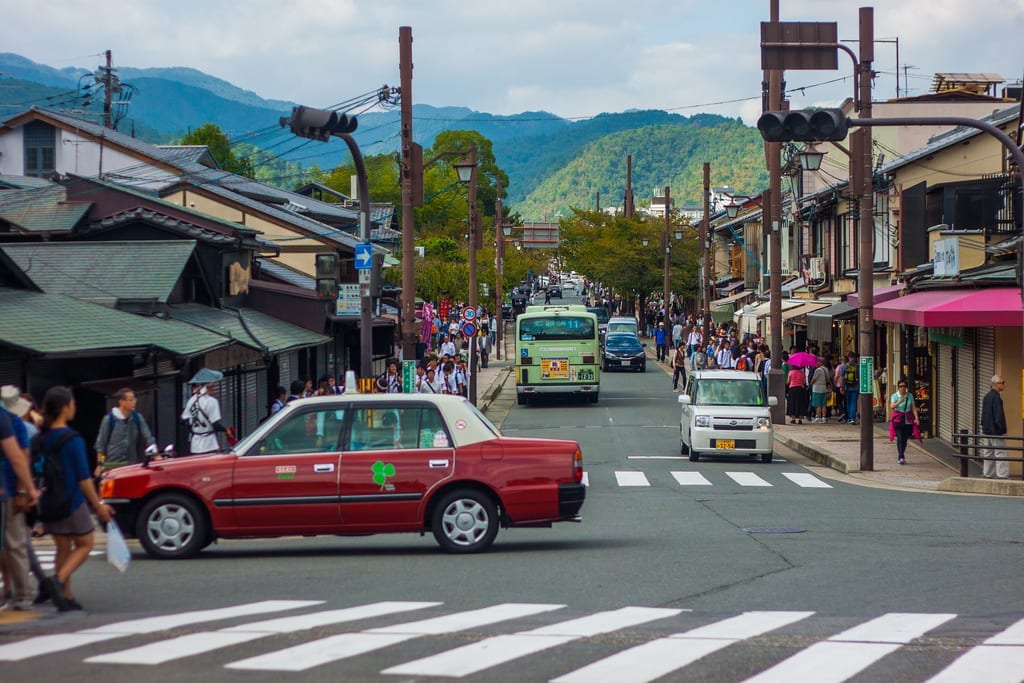
Pick a Paper Fortune
Along one street we found colourful little-rolled fortunes sitting outside a beautifully decorated house. All you had to do was slip a coin into the container and take out a fortune. Fortunes on the go.
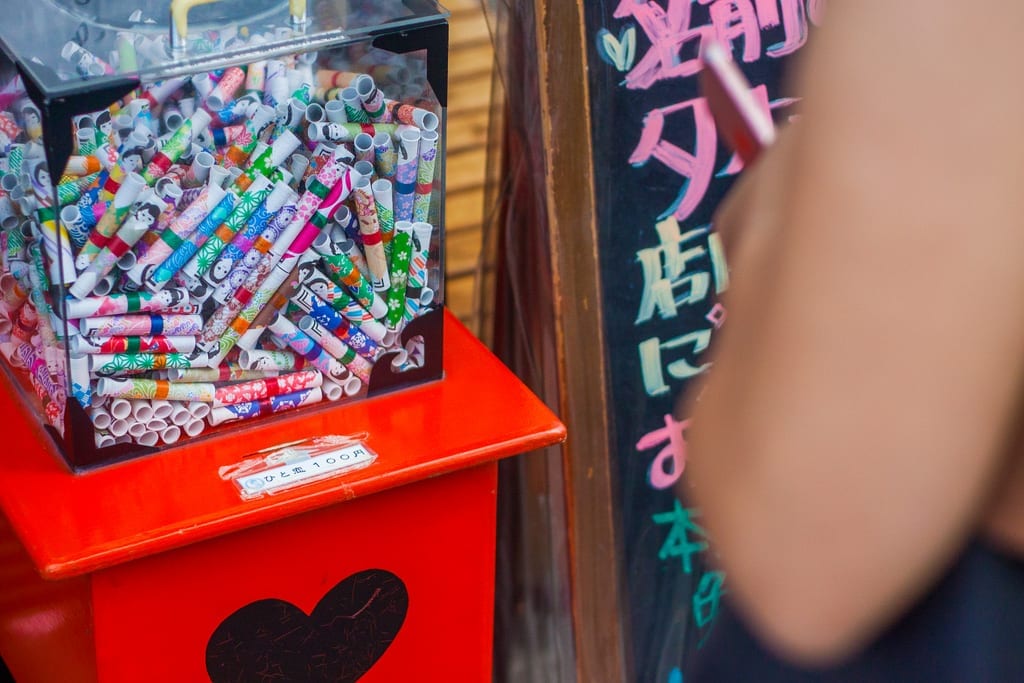
Sample Senbei
One of the more traditional snacks along the street are Senbei. Senbei are Japanese rice crackers which come in a variety of flavours. Senbei are usually eaten with green tea and sometimes offered as snack when visiting a guest house. We stopped to snack on a few different varieties. We sample both some sweet and savoury options. They were snappy and fresh, hot from the grill. The charcoal from the grill gave them a rich, smoky flavour turning a few simple ingredients into a complex dish. The most famous flavours are nori (seaweed), soy nut, soy sauce and red chilli.
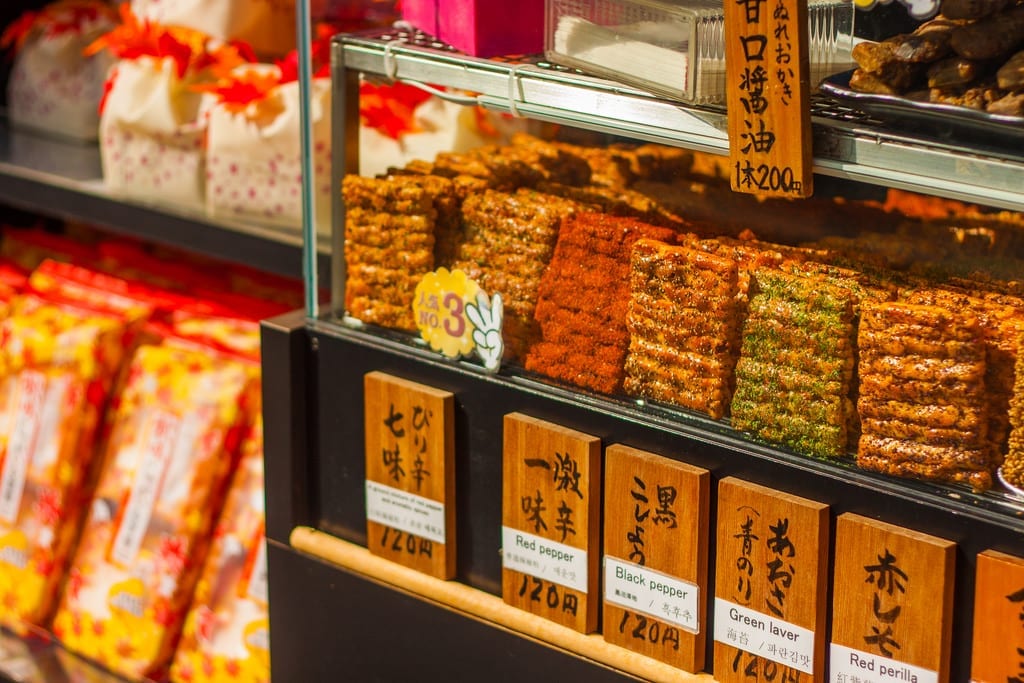
Kotokikityaya
Stop off at Kotokikityaya right at the entrance to Saga-Arashiyama to taste their authentic cherry mochi. With a beautiful view of the river, in a traditional tea-house setting, there isn’t a more perfect way to start your morning or have an afternoon snack. Be sure to pair your cherry mochi with a powdered green tea to complete the meal.
Akahime Kimono Shop
What I was looking for while we were shopping was a vintage kimono. I had passed up on a few kimonos in Tokyo, but they all were too new and didn’t have the kind of character I was looking for. There were a range of clothing shops in Arashiyama for kimonos. Some were by exclusive designers, others were the ubiquitous silk version you see in every tourist shop. Akahime Kimono Shop is by far the best option if you’re looking for a tradition kimono at a great price!
These kimonos were so well taken care of and felt brand new. Their designs ranged from traditional to more modern. You could find some handcrafted and one off designs here at competitive prices. The sweet woman who owned the shop helped me try on a few different options to find my perfect look and fit. I found a white and neon robe from the 1980’s that had some real unique designs that made it stand out from the other traditional ones. I loved it and got to pair it with a classic obi – all for just $25 USD.
The Chiri-Men Craft Museum
This is my favourite handmade craft store in Arashiyama. Here you can find a myriad of different products all made from a weaving technique called Chirimen. The crafter used cloth or silk and “wrinkles” the fabrics into all different things like small toys, birds, dolls, purses and even these darling “hanging hina” dolls, where are good luck charms hung from the ceiling. The different items symbolized on the chain represent the kinds of things you are praying for, like health, children or wealth.
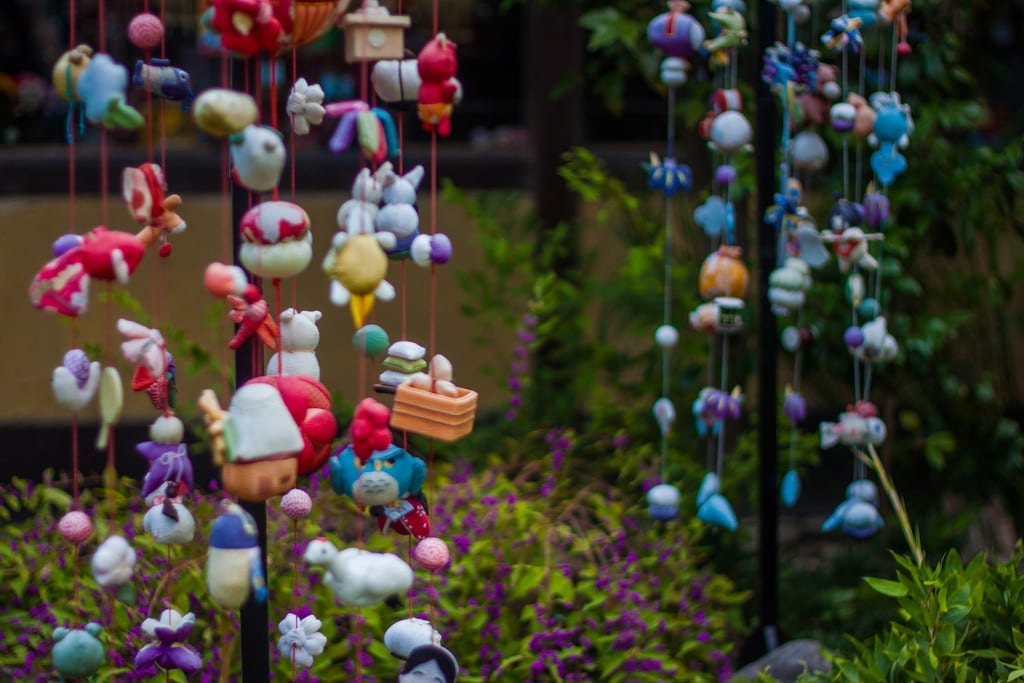
Sagano Romantic Train Station
Along these backstreets, you might come across one of the vintage train stations which service the Sagano Romantic Train route. The station’s columns are wrapped in bamboo shaped plexiglass, but the remainder of the outdoor structure is reminiscent of train stations from the 1920s.
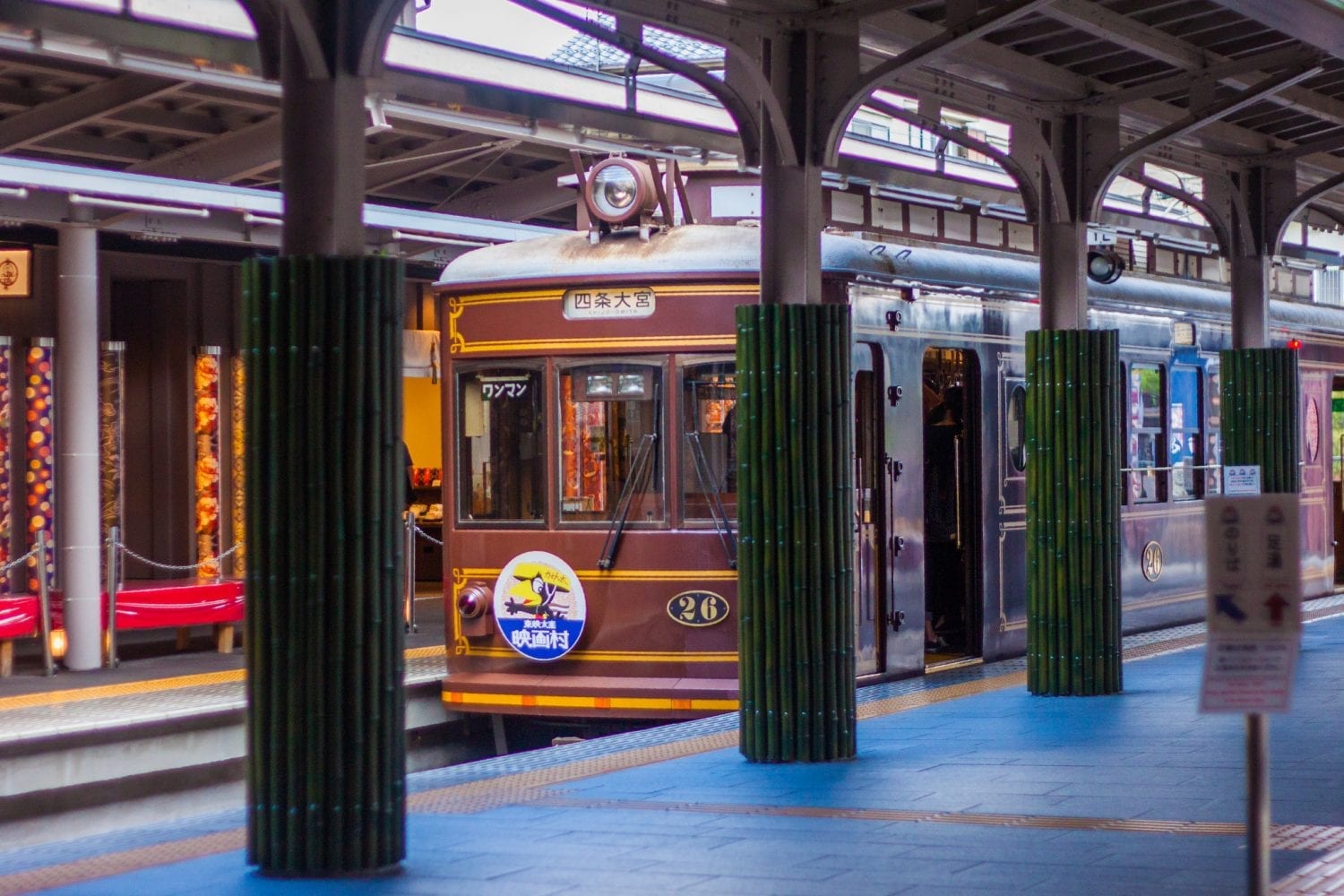
Kimono forest
Behind the station, you can find the Kimono forest. The forest is made up of cylinder-shaped pillars which contained within them various textile used in the design of traditional Japanese Kimonos. There are about 600 different pillars with 32 different patterns inside. Walk around to see if you can spot them all! The best time of day to see this exhibit is at dusk since the columns all light up and form a glowing pathway.
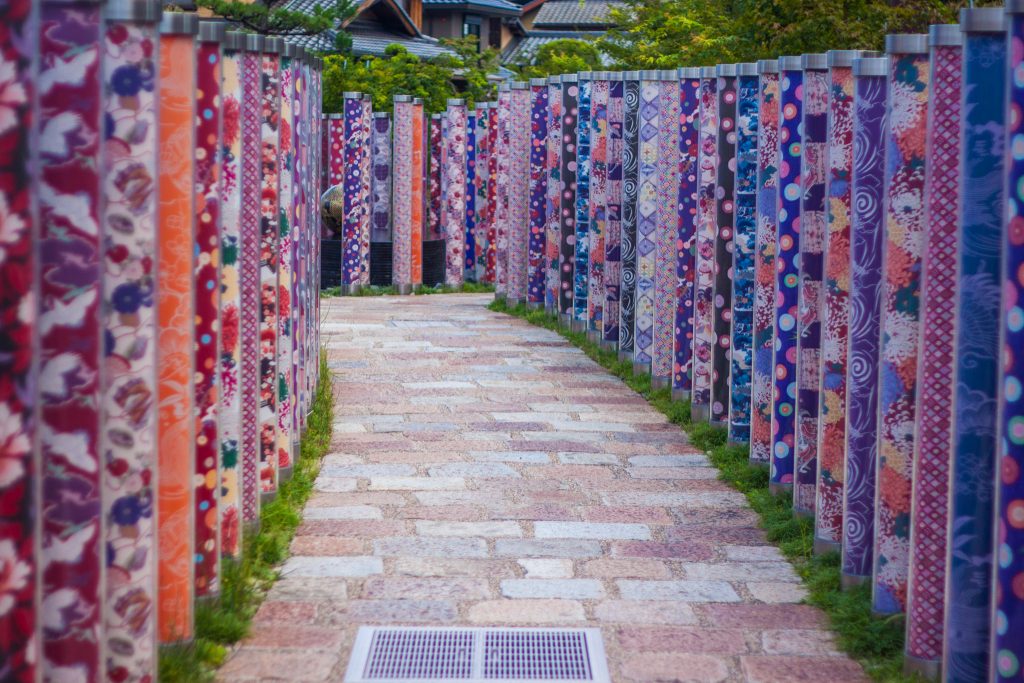
Footbath of Arashiyama Onsen Station
As this is the mid point in your journey, it seems fitting that it’s time for a little rest. Take a break at the Footbath of Arashiyama Onsen Station where you can grab a ticket for 200 yeh to soak your tired feet in this natural hot spring. It’s a great way to rest and recharge to keep your enegery up for the rest of the day.
Unagi Hirokawa
If you’re looking for somewhere to eat lunch, there really is no better place than Unagi Hirokawa. This place gets busy so it’s best to arrive early or be willing to wait, and trust me, it’s worth the wait. On busy weekends, they often sell out of food before 1pm so don’t dilly dally! This place is most famous for their incredible unagi, or barbeque eel. It’s delicately charred on the grill and then slathered in a sweet and savoury sauce. This eel is fatty, tender and FRESH!
Saga-Toriimoto
Away from the main street, and down a narrow alleyway, you’ll find Saga-Toriimoto. The houses along this road all are in the style of the Meiji Period (1868-1912) and have been preserved by the city and the owners. It is a living museum of Japanese architecture. Some of the houses have been converted into restaurants and shops so be sure to poke your head inside to get a chance to see the interior of these hundred-year-old houses.
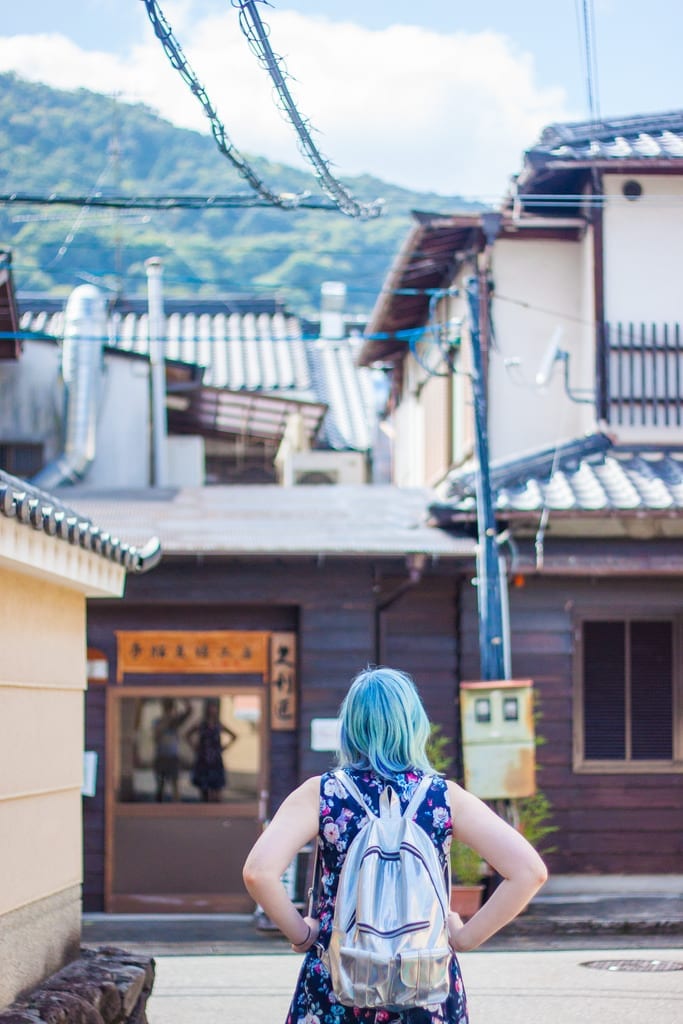
Walking through these tiny, side streets and peering into front yards and back porches were left like were on a Japanese secret garden tour of our own making.
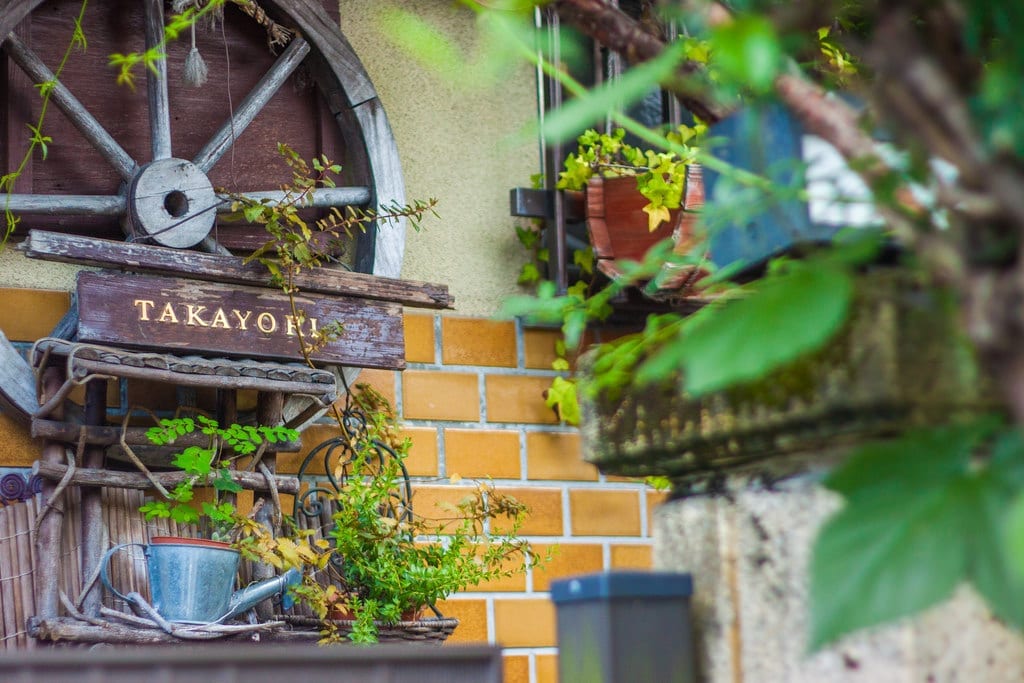
Nisonin Temple
If you’re visiting during the summer or the fall, you’ll want to make a stop at Nisonin Temple. Nisonin Temple is a small hillside temple where you can be amazed at firey fall foliae or the stunning blooms of purple and blue hydrengas in the summer. Take a stroll in the temple’s cemetery, where you can find some of Japan’s emperors and nobles buried here.
Rakushisha Residence
If you find yourself strolling along the backstreets of Arashiyama be sure to search out the Rakushisha Residence. This thatched roof hut once belonged to the 17th-century haiku poet Mukai Kyorai. He is one of Japan’s greatest poets, and the house is like a piece plucked out of time. You can imagine him inside there, writing out a poem on the cold, tatami floor.
Tenryu-ji Temple
Tenryu-ji Temple is probably the most visited temple in Arashiyama. The original temple was built in 1339 but due to fires and wars over the years the buildings standing here today are modern reconstructions from 1912. The gardens however, withstood the test of time and are the very same as they were when they were originally designed in 1339. It is perhaps for this reason that they are one of the Top 5 Zen temples in all of Kyoto! Admission is 500 yen (and extra 300 if you want to enter of the buildings, and if a great place to explore to study the incredible nature of Japanese Zen gardens.
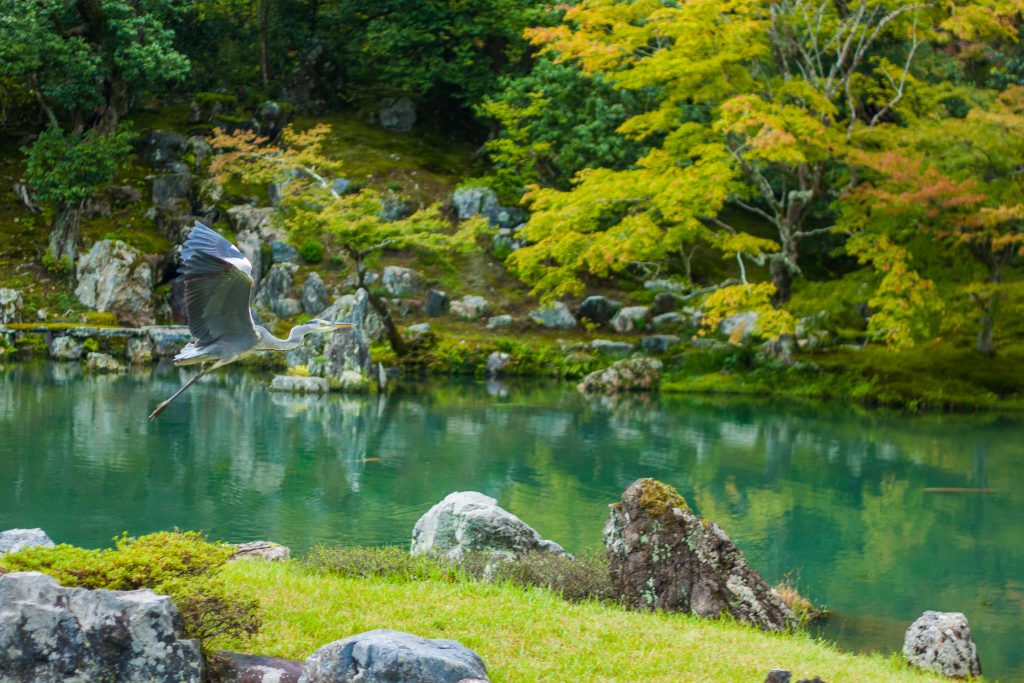
Like so many travellers before us, we reminisced about the magical town we left behind as we walked back to our hotel. Although this is a great list to get you started, don’t try to rush around and just check off things on a list. Exploring, getting lost and stumbling upon hidden gems is the best part about travelling!
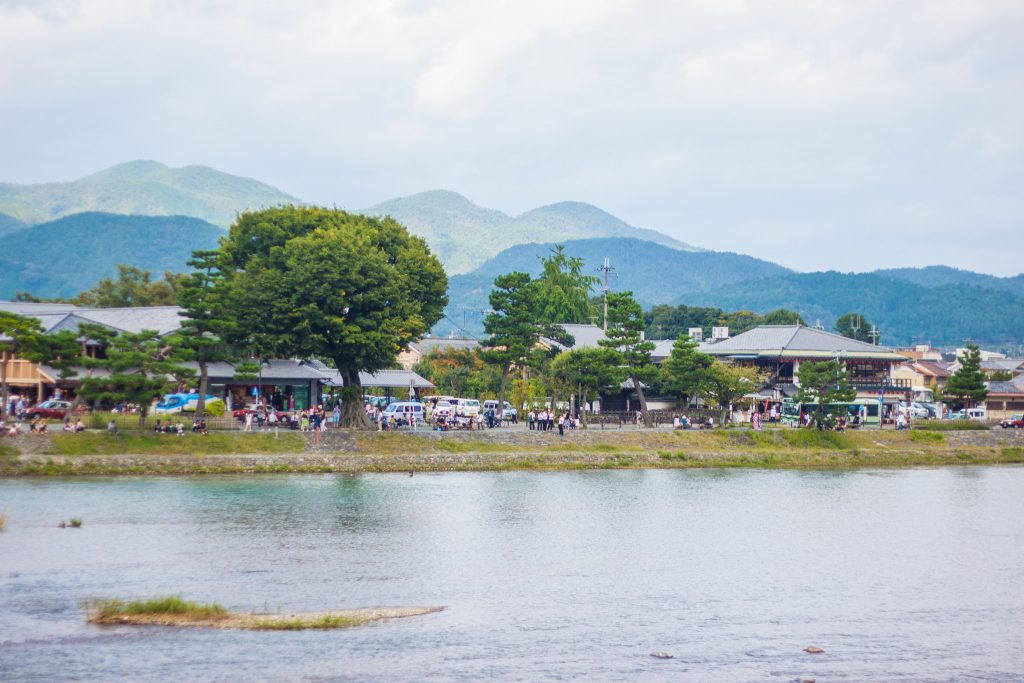



 (@miju_yah)
(@miju_yah)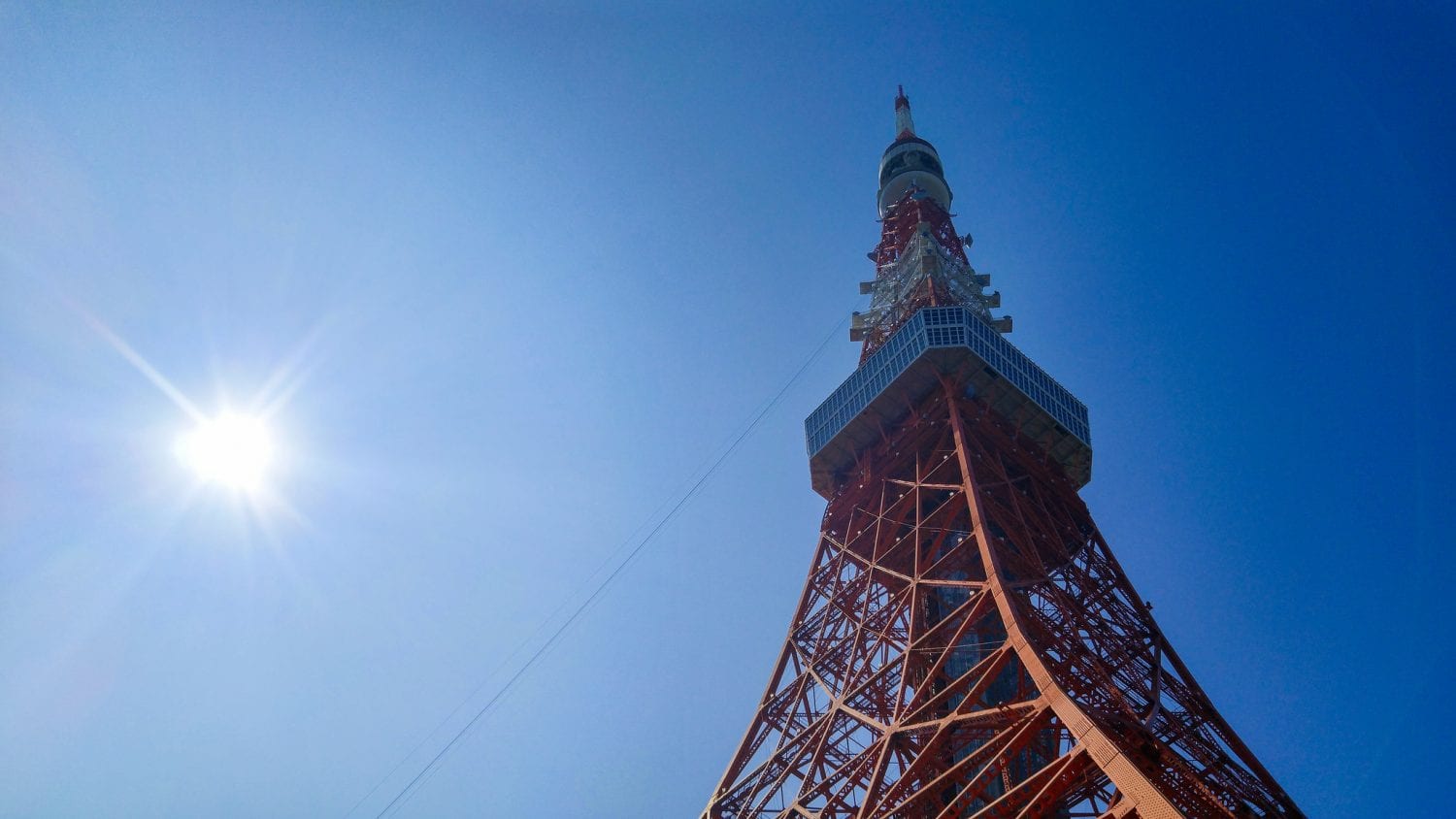
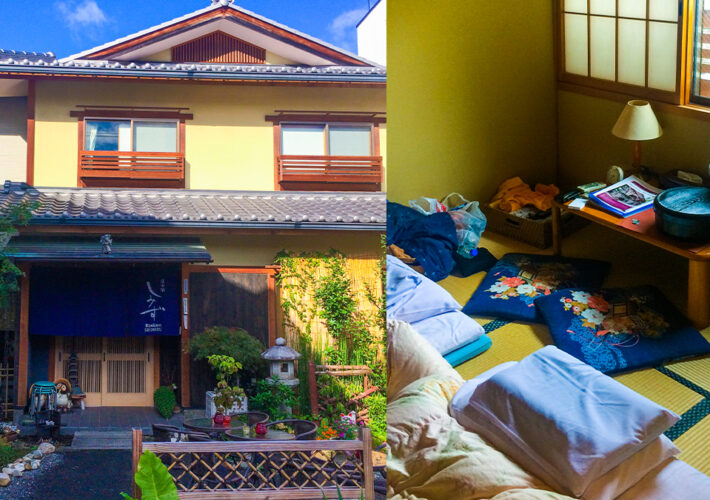
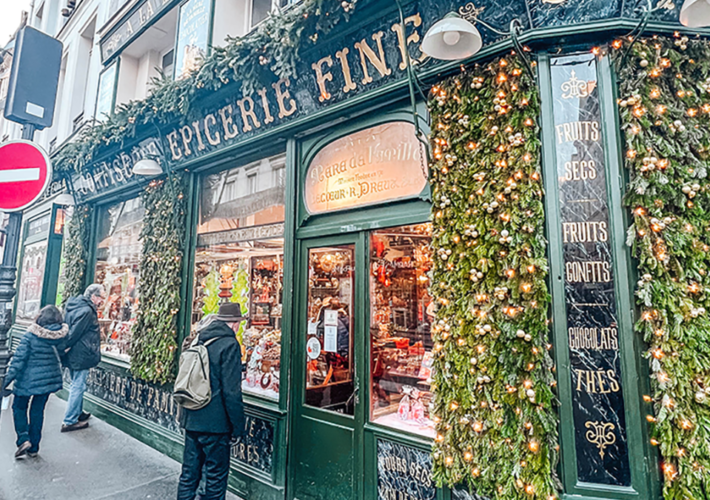

Leave a Comment